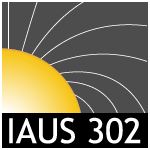Magnetic splitting of some prominent spectral lines produced by closely spaced doublets or triplets should be treated using the theory of the partial Paschen-Back (PPB) effect. Depending on the strength and orientation of magnetic field, the PPB effect can result in the Stokes I and V profiles of a spectral line that differ significantly from those predicted by the Zeeman effect theory. It is important to understand the size and types of errors that are introduced into magnetic spectrum synthesis by treating such lines with the usual Zeeman splitting theory rather than using the correct theoretical treatment of line splitting. The analysis indicates that for high precision studies of some spectral lines the PPB approach should be used if the field strength at the magnetic poles is Bp> 6-10 kG. For high signal-to-noise ratio spectra and/or enhanced silicon abundance, the PPB effect can become important even for a field strength of Bp> 3 kG. In the case of the SiII line 5041Å, the difference between the two simulated profiles is caused by a significant contribution from a so called ''ghost" line. The Stokes I and V profiles of this particular line simulated taking into account PPB splitting provide a significantly better fit to the observed profiles in the spectra of the magnetic Ap stars HD318107 and HD178892 than the profiles calculated with Zeeman splitting.
|
|
|
|
Thursday
29
Session 3 - Origin and impact of magnetic fields in higher-mass stars with radiative outer layers
Chair: Stephen Marsden › 14:30 - 14:50 (20min) Partial Paschen-Back splitting of SiII and SiIII lines in magnetic CP stars
1 : Université de Moncton
(UdM)
-
Website
Département de physique et d'astronomie, Université de Moncton Moncton, N.-B. E1A 3E9 -
Canada
2 : Dept of Physics & Astronomy, University of Western Ontario
(UWO)
18 Rollingwood Circle, London, Ontario N6G 1P7 -
Canada
3 : Armagh Observatory
(Armagh Observatory)
Armagh Observatory, Armagh, Northern Ireland -
United Kingdom
|

 PDF version
PDF version
